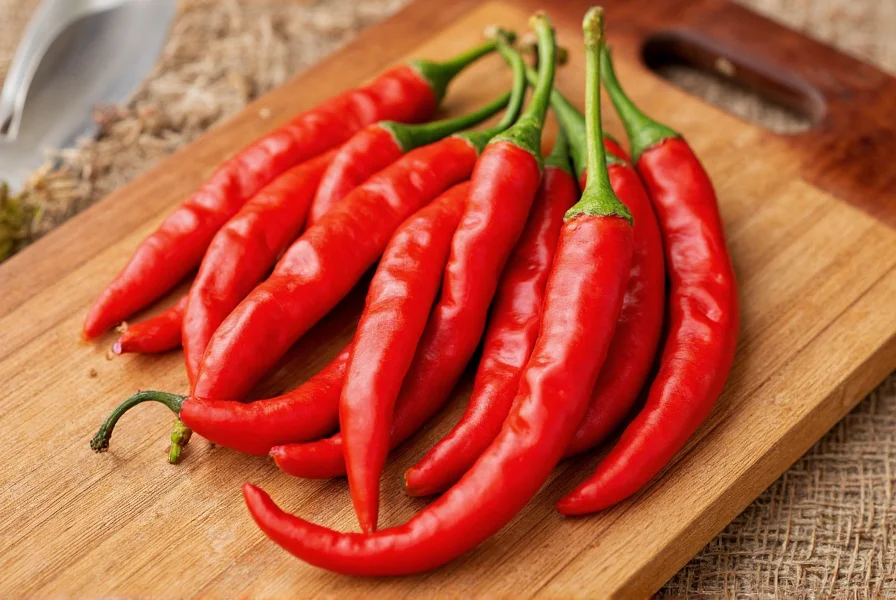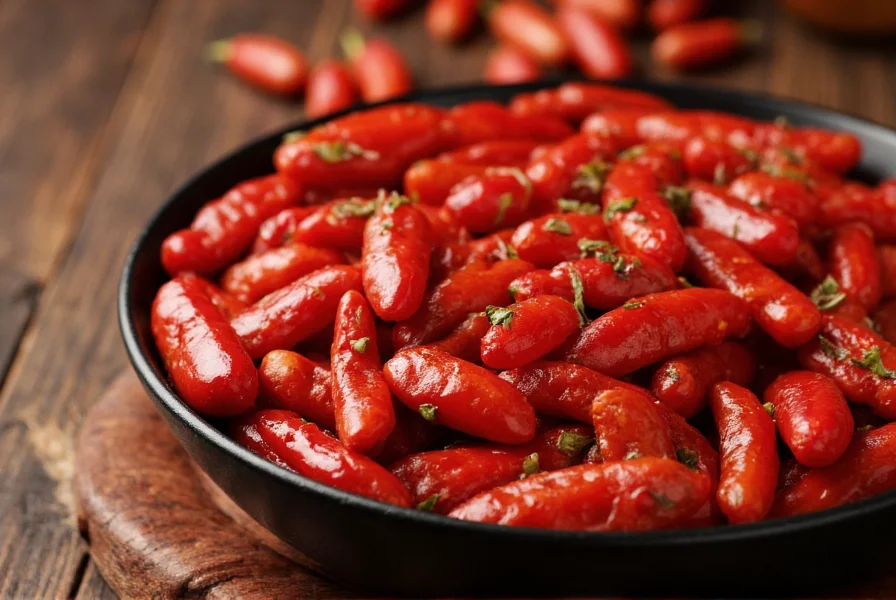When exploring Chinese cuisine, many encounter the term "China chili" and assume it refers to one specific pepper. In reality, China's vast geography produces numerous chili varieties, each with distinct characteristics that define regional dishes. Understanding these differences transforms your approach to authentic Chinese cooking and helps you select the right pepper for specific recipes.
Major Chinese Chili Varieties and Their Characteristics
Chinese culinary tradition utilizes several key chili types, each contributing unique flavors to regional specialties. The most prominent varieties include:
| Chili Variety | Chinese Name | Scoville Units | Flavor Profile | Primary Regions |
|---|---|---|---|---|
| Facing Heaven Chili | 朝天椒 (Cháotiān jiāo) | 30,000-50,000 | Sharp heat, slightly smoky, floral notes | National, especially Sichuan |
| Er Jing Tiao | 二荆条 (Èr jīng tiáo) | 15,000-25,000 | Fruity, aromatic, moderate heat | Sichuan province |
| Xiao Mi Ya | 小米辣 (Xiǎo mǐ là) | 30,000-45,000 | Intense heat, citrus notes | Southern China, Yunnan |
| Lao Gan Ma Chili | 老干妈辣椒 | 20,000-35,000 | Garlicky, fermented, balanced heat | Commercial blend |
Regional Differences in Chinese Chili Usage
China's regional cuisines showcase dramatically different approaches to chili peppers. Understanding these distinctions helps recreate authentic flavors:
Sichuan Cuisine: Famous for its mala (numbing-spicy) profile, Sichuan cooking primarily uses er jing tiao for its aromatic qualities and moderate heat. Chefs often pair these with Sichuan peppercorns to create the signature tingling sensation. The region's humid climate makes chilies both a flavor enhancer and preservative.
Hunan Cuisine: Hunan chefs prefer facing heaven chilies for their direct, intense heat. Hunan dishes typically feature fresh red chilies rather than the numbing profile of Sichuan cuisine. The "steamed fish head with chopped chili" exemplifies this straightforward heat approach.
Yunnan and Guizhou Cuisine: These southwestern regions utilize xiao mi ya (bird's eye chilies) for their explosive heat and citrus notes. Yunnan's famous crossing-the-bridge noodles often include fresh chilies as a condiment, while Guizhou cuisine features fermented chili pastes.

Culinary Applications and Preparation Methods
Chinese cooking employs multiple preparation techniques that transform chili peppers' characteristics:
Dried Chilies: The most common form in Chinese pantries, dried chilies develop complex smoky flavors. Sichuan chefs typically fry dried facing heaven chilies in oil until they turn deep red but not blackened—this extracts maximum flavor without bitterness. Properly prepared dried chilies should remain pliable, not brittle.
Chili Oils: Authentic Chinese chili oil (lazi you) uses a specific technique: heating oil to just below smoking point, then cooling slightly before adding chilies. This preserves volatile flavor compounds that high heat would destroy. The best oils incorporate multiple chili varieties for layered heat.
Fermented Pastes: Regional specialties like Sichuan doubanjiang (broad bean chili paste) undergo months of fermentation, developing umami depth beyond simple heat. These pastes form the flavor foundation of dishes like mapo tofu.
Selecting and Substituting Chinese Chilies
Finding authentic Chinese chili varieties outside Asia requires knowing what to look for:
When shopping for er jing tiao, seek long, slender peppers (6-8 inches) that curve slightly at the tip. Their distinctive feature is a subtle purple hue when immature. In Western markets, guindilla peppers offer the closest substitute for their moderate heat and aromatic profile.
For facing heaven chilies, look for small, upward-pointing peppers (1-2 inches) that grow vertically on the plant. Thai bird chilies work as substitutes, though they lack the floral notes. Never use cayenne as a substitute—its flavor profile differs significantly from authentic Chinese varieties.
Understanding chili heat levels in Chinese cooking reveals that Chinese cuisine prioritizes flavor complexity over pure heat. Many authentic recipes use chilies primarily for aroma, removing them before serving. This explains why some Chinese dishes taste spicy but don't burn as intensely as Mexican or Thai counterparts using similar Scoville-rated peppers.

Practical Tips for Cooking with Chinese Chilies
Mastering Chinese chili usage requires technique:
- Control the heat: Remove seeds and membranes from dried chilies for milder flavor. For authentic Sichuan dishes, keep some seeds for balanced heat.
- Oil temperature matters: Heat oil to 280-300°F (138-149°C) before adding dried chilies. Higher temperatures create bitterness.
- Toast spices together: Fry chilies with Sichuan peppercorns and star anise to create flavor synergy.
- Storage: Keep dried chilies in airtight containers away from light. Properly stored, they maintain flavor for 12-18 months.
When recreating authentic Chinese chili recipes, remember that Chinese cooking often uses chilies as background notes rather than the dominant flavor. The best dishes achieve harmony where chili enhances other ingredients rather than overwhelming them.
Frequently Asked Questions
What is the difference between Sichuan and Hunan chili usage?
Sichuan cuisine uses chilies primarily for aromatic complexity paired with Sichuan peppercorns to create mala (numbing-spicy) sensations, often using er jing tiao peppers. Hunan cuisine focuses on direct, intense heat from facing heaven chilies without the numbing element, featuring more fresh chilies in dishes.
Can I substitute cayenne pepper for Chinese chilies?
Cayenne makes a poor substitute for authentic Chinese chili varieties. While similar in heat level, cayenne lacks the floral, smoky, or citrus notes of Chinese chilies like er jing tiao or facing heaven. Guindilla peppers better approximate er jing tiao's flavor, while Thai bird chilies work better for facing heaven chilies.
Why do Chinese recipes often remove chilies after cooking?
Chinese chefs frequently remove whole chilies after they've infused oil or broth because they've released their flavor compounds but would become bitter if left to cook further. This technique extracts maximum aroma without overwhelming heat or bitterness in the final dish.
What makes Chinese chili oil different from regular chili oil?
Authentic Chinese chili oil uses specific preparation techniques: heating oil to precise temperatures (280-300°F), using multiple chili varieties for layered heat, and often including aromatics like Sichuan peppercorns and star anise. Commercial "chili oils" typically use a single chili type and higher heat that destroys delicate flavor compounds.











 浙公网安备
33010002000092号
浙公网安备
33010002000092号 浙B2-20120091-4
浙B2-20120091-4